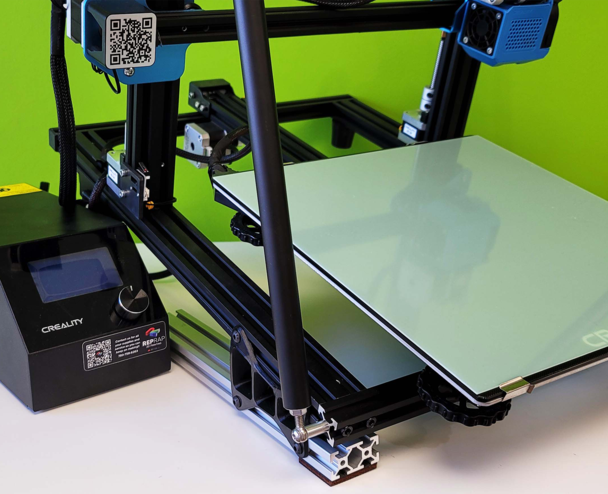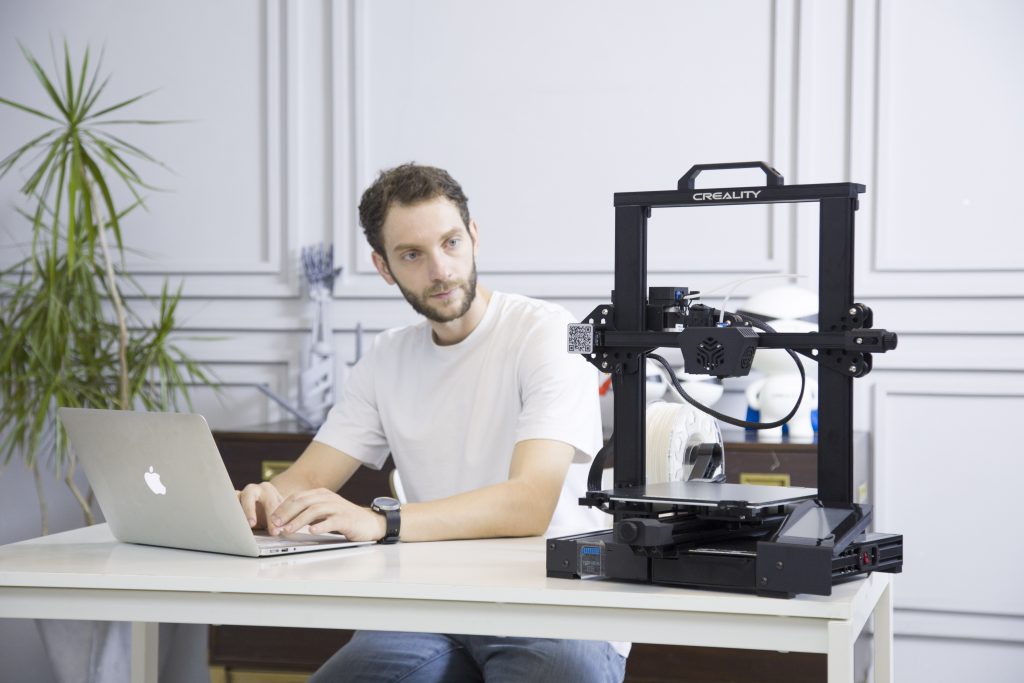The 2021 3D Printing Industry Awards shortlists are now open for voting until the 20th of October. Cast your votes here.
3DQue, a Vancouver-based developer of automation technology for the 3D printing industry, has announced the launch of two new Quinly automation kits for the Creality CR-10 and CR-6 SE.
Quinly is a virtual 3D printer operator served by a Raspberry Pi – a hardware and software kit capable of running desktop 3D printers on its own. The technology is designed to make 3D printing more scalable by taking manual labor out of the equation. It’s primarily aimed at print labs, on-demand manufacturers, educational institutions, and anyone else seeking automated mass part production.
As well as automating tasks such as part removal, bed cleaning, and adhesive application, the browser-based platform can also be used to schedule an entire queue of builds remotely. The Quinly kit contains an automated part removal system (the frame), a VAAPR print bed, and the Quinly printer control software. The product is already compatible with a wide range of popular desktop 3D printers, including the Prusa MK3, the Ender 3, and the Ultimaker S5, with more to come.

Quinly for the Creality CR-10
The CR-10 is one of Creality’s larger format 3D printers, offering a build volume measuring 300 x 300 x 400mm. This makes the system great for large part and batch production but, according to 3DQue, print farm systems tend to only be operational for around 35% of the day. The new CR-10 Quinly kit is designed to drastically increase this figure, slashing manual operator times down by up to 95%.
The large VAAPR build plate included in the box isn’t made of glass or PEI, and it isn’t coated or textured. Instead, it leverages a special non-toxic, non-flammable formulation which reportedly provides 500x more adhesive force when heated. Once the bed cools down, the parts simply pop off and are guided down into the collection bay by the printhead, eliminating the need for scraping or bending. The VAAPR bed is compatible with ABS, PLA, HIPS, Nylon, ASA, PC, and more.
Mateo Pekic, Chief of Innovations at 3DQue, states, “Quinly for CR-10 lets you automate the biggest prints yet enabling 24/7 lights-out production of large parts, props, costume pieces, and more, saving lots of time for both print farms and hobbyists.”
Quinly for CR-10 is priced at $349.

Quinly for the Creality CR-6 SE
On the other hand, the CR-6 SE was Creality’s first crowdfunded 3D printer, raising approximately $4.3m on Kickstarter. The system comes complete with a number of clever innovations designed to fix common problems typically found in consumer-grade FDM printers. To fix the age-old issue of bed leveling, the machine offers an in-built “leveling-free device” that utilizes a smart pressure sensor to constantly automatically level the bed so the user doesn’t have to.
The Quinly kit for CR-6 SE is able to activate this bed leveling system, as well as the printer’s filament runout sensor, enabling reliable multi-day print jobs without any human user input. The software even notifies operators if the filament runs out or if any maintenance is required in regards to the leveling of the bed.
Quinly for CR-6 SE is priced at $249.

Automation in 3D printing is key if the technology is to be scaled up for high-volume industrial applications. Earlier this month, Materialise, a leading 3D printing software developer, announced the launch of its new Dental Module for Materialise Magics to automate dental 3D printing. Aimed at dental labs, the modular add-on streamlines 3D print preparation for common dental applications, covering everything from support generation to build nesting.
Elsewhere, in the post-processing space, automated post-printing system developer Oryx Additive recently partnered with 3D printer manufacturer Arburg to offer support removal and part finishing systems to Arburg’s customers. Designed for use with polymer 3D printed parts, Oryx Additive’s SCA product line is capable of removing solvent-based and water-soluble support structures, resulting in a hands-free post-processing workflow.
Subscribe to the 3D Printing Industry newsletter for the latest news in additive manufacturing. You can also stay connected by following us on Twitter, liking us on Facebook, and tuning into the 3D Printing Industry YouTube Channel.
Looking for a career in additive manufacturing? Visit 3D Printing Jobs for a selection of roles in the industry.
Featured image shows 3DQue’s DIY Quinly kit. Photo via 3DQue.


